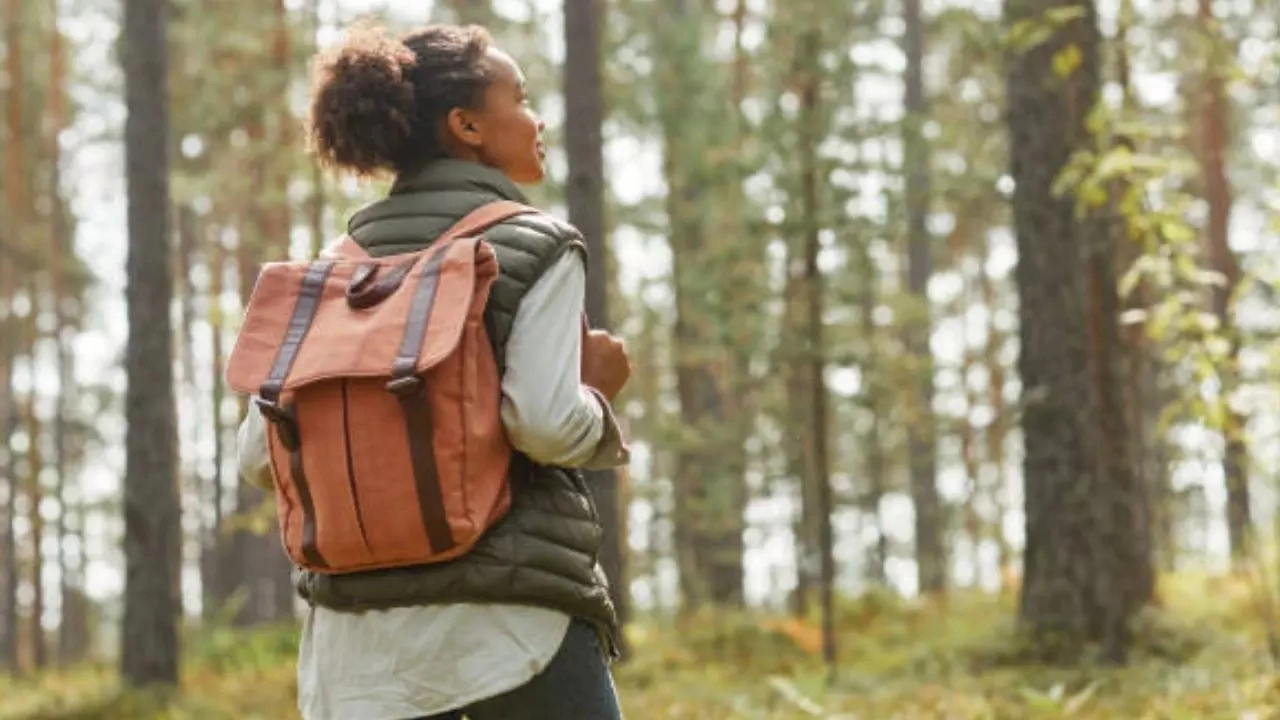Pallavi Mehra • 07 Sep 2024
Weight Loss: Here's How New Walking Trend Rucking Can Help You Shed Extra Kilos

Weight Loss: Here's How New Walking Trend Rucking Can Help You Shed Extra Kilos (Image Credits: iStock)
In the world of fitness, new trends emerge everyday, offering a range of ways to stay active and achieve health goals. Recently, one such trend has been taking over social media due to its immense health benefits known as "rucking." This new walking trend is simple yet highly effective for those looking to shed extra kilos and improve overall fitness. But what exactly is rucking, and how can it help you on your weight loss journey? Let’s check!
What is Rucking?
Rucking, derived from the military, involves walking with a weighted backpack or "rucksack." The concept is: that you add resistance by carrying weight while walking, making it a more challenging workout without requiring complex equipment or techniques. Originally used by soldiers to build endurance and strength, rucking has now become a popular workout for civilians.The best part about rucking is—no gym memberships, fancy gear, or intense training regimens are needed. All you require is a sturdy backpack and some weight. The activity is effective for all fitness levels, whether you’re a beginner starting with a few kilos or a seasoned athlete looking to add a new dimension to your routine, rucking is the exercise for you.
How Does Rucking Help In Weight Loss?
Rucking is an efficient way to burn calories and boost metabolism, making it an excellent tool for weight loss. Here’s how:- Increased Calorie Burn: Walking is a great low-impact exercise for fat loss, but when you add extra weight to the equation, you naturally increase your calorie burn. A 60-minute walk can burn anywhere between 200 to 400 calories, depending on your weight, speed, and terrain. With rucking, you can significantly boost this number. The added weight forces your body to work harder, leading to a greater calorie expenditure.
- Builds Muscle While Burning Fat: One of the main advantages of rucking over regular walking is the resistance it provides, which helps build and tone muscles. Carrying weight strengthens your legs, back, shoulders, and core muscles. By building lean muscle, you enhance your resting metabolic rate (RMR), which means your body continues to burn calories even when you're not working out.
- Improves Cardiovascular Fitness: Rucking offers a cardiovascular workout similar to running or jogging but with less impact on the joints. This makes it an ideal option for those who want to improve heart health and endurance without the risk of injury associated with high-impact activities. Consistently engaging in rucking will improve your stamina, increase lung capacity, and contribute to overall heart health—all important factors in a sustainable weight loss journey.
- Boosts Metabolism: The added resistance of carrying weight increases the intensity of your walk, causing your body to burn more fat for energy. Over time, the cumulative effect of burning extra calories during and after your workouts will lead to weight loss. As your muscles grow and strengthen, your metabolism gets a further boost, helping to shed fat more efficiently.
- Low-Impact, High-Reward: For those who find running or other high-intensity exercises difficult or too hard on the joints, rucking is an excellent alternative. It provides many of the same benefits as more intense exercises but without the strain. Rucking is gentler on the knees, hips, and ankles, making it accessible to a wider range of people, including those with joint issues or those recovering from injuries.
Getting Started with Rucking
If you’re interested in incorporating rucking into your fitness routine for weight loss, here’s how to get started:- Choose the Right Backpack: Start with a comfortable backpack that can evenly distribute weight across your shoulders and back. Look for one with padded straps and an adjustable waist belt for added support.
- Start with Light Weights: As a beginner, start with a lighter weight—around 10% of your body weight is a good rule of thumb. Gradually increase the weight as your body adapts to the workout. Common items like water bottles, books, or sandbags can be used to add weight.
- Pick Your Pace and Terrain: Start with flat, even terrain to get used to the additional weight. As you progress, you can increase your speed or incorporate hills and varied terrains to challenge yourself further.
- Maintain Proper Form: Keeping proper posture is key to avoiding strain or injury. Keep your back straight, and shoulders relaxed, and maintain a steady, comfortable pace. Make sure your knees are slightly bent, and engage your core as you walk.
- Consistency is Key: Like any fitness routine, consistency is crucial for results. Aim for 2-3 rucking sessions a week, gradually increasing the intensity as your strength and endurance improve.
The Mental Health Benefits of Rucking
Beyond physical benefits, rucking also has a positive impact on mental health. Walking itself is known to reduce stress, and the added challenge of rucking can give you a greater sense of accomplishment. The simplicity of the workout also makes it a great way to clear your mind, enjoy nature, and disconnect from the daily grind.Get Latest News Live on Times Now along with Breaking News and Top Headlines from Weight Loss, Health and around the world.